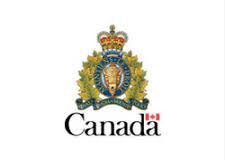Continuing Care Operators Adopt Safe Visitation Practices
Christian Health Association of Alberta
Submitted
While Alberta’s continuing care sites begin to adopt safe visitation practices this week, the province’s not-for-profit operators are offering a public education resource to remind Albertans of the critical role they play in keeping residents and seniors safe.
“We’ve gone from restricting visitors and isolating our seniors to welcoming more essential visitors into our sites,” explains John Kopeck, vice-chair of Christian Health Association of Alberta (CHAA), which represents 80% of the province’s not-for-profit care providers. “Designated family visitors and paid companions are essential to the health and well-being of the residents in our care, and we are delighted to have them back on board and resuming their critical support roles.”
However, along with the enjoyment of re-connecting with loved ones in congregate care settings comes an enormous responsibility for anyone considering a visit, whether as an essential visitor or purely for social reasons. “It’s not just about the precautions you take during your visit,” says Kopeck, “such as distancing, wearing a mask, and using good hand hygiene.”
What’s even more important is what visitors were doing for the 14 days before their visit. Were you in crowded indoor spaces over the past two weeks? Did you have visitors in your home? Do you have younger adults in your household that participate in higher-risk activities? Does your circle of friends and co-workers usually go mask-less? Did you use public transit or travel for work?
These practices can put individuals in a ‘higher-risk visitor’ category, meaning they could potentially have been exposed to COVID-19 and either not be aware yet, or perhaps not ever show symptoms. According to Executive Director Leah Lechelt, CHAA’s message to the visitor community is simple: Assess your own risk as a visitor, and stay away if you check off four or more attributes from the higher-risk visitor scale. “Until you’re clearly in the lower-risk visitor category, please leave the continuing care visits to other family members that don’t carry as much risk.”
Continuing care operators will be consulting with families and residents over the coming days to develop visitation policies and practices specific to each site. The aim is to strike a balance between the emotional and social needs of residents, the wishes of families, and the health and safety of all site residents. “We’re all desperate to give our seniors the care and companionship they deserve,” says Lechelt, yet in doing so, “We want to ensure no resident in our care is placed at undue risk due to a visitor that may have been unknowingly exposed to COVID-19.”
Albertans are asked to be compassionate and compromising in working with continuing care operators and families to collectively do our very best for those in our care. “Never before have we been challenged to come together as a caring community,” says Kopeck. “In many ways it is making us stronger by recognizing how much we can give back to our most vulnerable seniors when they need us most.”






